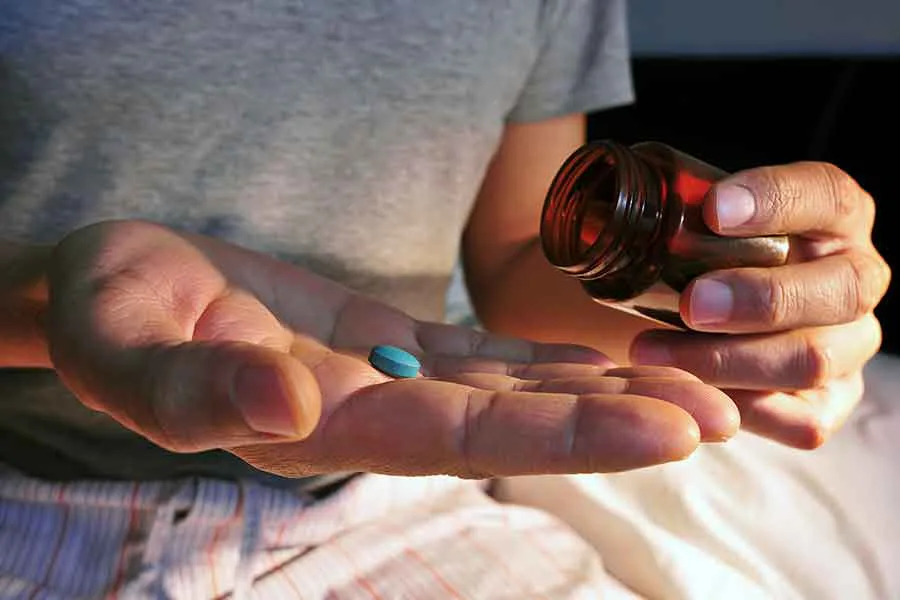Addiction is a difficult disease to define. When does therapeutic drug use cross over into abuse? What is the difference between frequent social drinking and alcohol use disorder? Should comfort-seeking drug use (such as mild-sedative ingestion before bed every night) be considered a disorder?
The Diagnostic and Statistical Manual of Mental Disorders (DSM) has acknowledged the difficulty at hand, and set forth guidelines to help users know when to seek help, and to help physicians make accurate diagnoses.
Prior to the publication of the current DSM-5, the manual distinguished between abuse and dependence in terms of severity, with “abuse” being on the mild end of the continuum and “dependence” being towards the critical end. The DSM-5 erases that distinction and instead combines the former classifications of “substance abuse” and “substance dependence” into one comprehensive category called “substance use disorder.” This broader category is meant to better encompass the reality of true patient experiences; clinical manifestations of addictions are hardly black and white or able to be sorted perfectly into a category.
The DSM-V suggests that a certain number of criteria must be met in order to define substance use as disordered: 2-3 for mild diagnoses, 4-5 for moderate diagnoses, and 6-7 for severe diagnoses. Their list of criteria is as follows:
- Taking the substance in larger amounts and for longer than intended
- Wanting to cut down or quit but not being able to do it
- Spending a lot of time obtaining the substance
- Craving or a strong desire to use the substance
- Repeatedly unable to carry out major obligations at work, school, or home due to substance use
- Continued use despite persistent or recurring social or interpersonal problems caused or made worse by substance use
- Stopping or reducing important social, occupational, or recreational activities due to substance use
- Recurrent use of the substance in physically hazardous situations
- Consistent use of the substance despite acknowledgment of persistent or recurrent physical or psychological difficulties from using opioids
- Tolerance as defined by either a need for markedly increased amounts to achieve intoxication or desired effect or markedly diminished effect with continued use of the same amount (does not apply for diminished effect when used appropriately under medical supervision)
- Withdrawal manifesting as either characteristic syndrome or the substance is used to avoid withdrawal (does not apply when used appropriately under medical supervision)
Other Ways of Evaluating Addiction
This checklist is a great start, and there are other ways to evaluate addiction as well. For example, the motivation behind the drug use is an important consideration. Is the user taking the drug expecting clinical benefits, or a euphoric high? Acute pain patients recovering from a traumatic injury may have a strong desire to use the substance to relieve their pain. They may also continue to use the drug even if it causes social problems because the pain is too hard to handle without medication. By DSM-5 standards, the patient could be diagnosed with a substance use disorder, but the motivation behind the drug use is inconsistent with that assessment.
Dosing, frequency/method of use, and the context of administration can sometimes be indicative of problem behavior, though not always. Lower doses and fixed regimes are oftentimes associated with therapeutic use, whereas erratic, escalating use can be indicative of abuse. There are, of course, countless exceptions to this standard so this could hardly be considered a concrete guideline for defining addiction. The method of drug use can often be slightly more helpful in making a diagnosis. An appropriate use of drugs follows the route of administration recommended by a physician. Chemical manipulation of the drug followed by injection, smoking, snorting, etc. is considered misuse. The context of administration is another factor that can also reveal misappropriation, as drug use in a school, home, or clinical setting can be quite different from use in a bar, club, or alleyway. Frequent use in unorthodox and/or unsanitary conditions can oftentimes be interpreted as a disorder, or a potential precursor to one.
What do I do if I or Someone I Love is Addicted?
If there is even a slight chance that you or your loved one might have a substance use disorder, it is best to err on the side of caution and consult an expert.
Two Dreams offers a safe, judgment-free place to start the healing process and to find the answers to these difficult questions. There are many different ways to start managing addiction, and we understand that what works for one person may not necessarily work for another. We provide inpatient, intensive outpatient, and outpatient services based on the unique needs of each individual and the level of care needed. Our trained counselors, under the supervision of a physician, are happy to talk through these options with you and help decide which placement will best fit your needs.
Professional guidance is a big part of what makes Two Dreams so successful as a treatment center; our staff is passionate, dedicated, and knowledgeable. Many of our employees have overcome their own challenges, meaning that they have a special appreciation for the struggles of addiction and can use their experiences to benefit others. We genuinely want the best outcomes for our clients and will make any and all efforts to ensure a smooth recovery for everyone. Making the decision to seek treatment is not easy, and we commend you for having the strength and courage to ask for help, whether it is for yourself or for a loved one.
Please know that you are not alone in this; we are here to help and we have faith in you.
